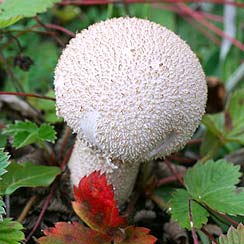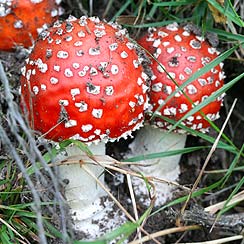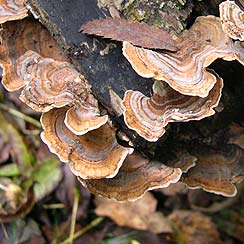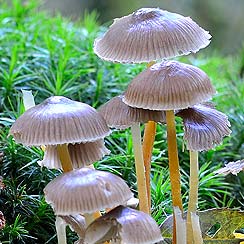HOME › MEDICINAL MUSHROOMS › WHY ARE MUSHROOMS SO GOOD FOR US?
Why are mushrooms so good for us?
How do they stimulate the immune system?
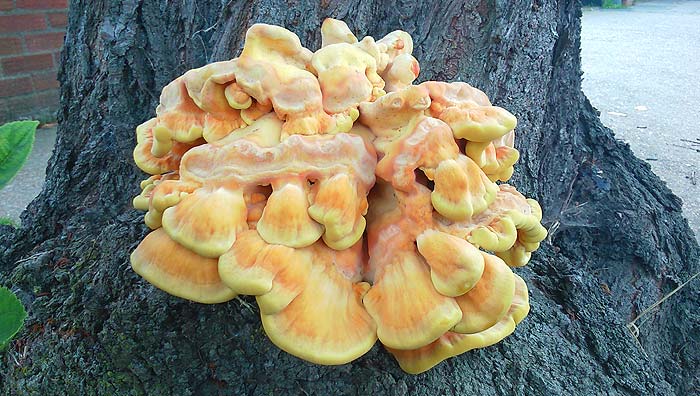
Mushrooms such as Reishi, Coriolus, Maitake and Lion's mane all contain polysaccharides. More specifically, the most well studied type of polysaccharide, in terms of their effects on the immune system, are the beta-glucans. These elements would basically be included in the carbohydrate and fibre portion of the mushroom. The polysaccharides are found generally as structural or storage elements in the walls of the cells that make up the mushroom.
Polysaccharides are basically very simple structures made up out of long chains of simple sugar bases such as glucose. Where they become complicated is that these simple sugar bases form long chains which can become extremely large and very complex, with lots of branches and sometimes forming large helical or spiral structures. They may even be connected to proteins, as is the case with the polysaccharide called PSK from Coriolus.
It is important to remember that the term polysaccharide and beta-glucan, does not refer to one particular molecule, but are general terms for many in the same class of molecule, and they vary widely in size, structure and how active they are in terms of immune system stimulation.
Polysaccharides and beta-glucans are classed nowadays as "Biological Response Modifiers", substances that are able to elicit an immune response (stimulation or suppression) in humans. Here are some facts about them to lead us into the explanation of how they work:
- Beta-glucans are the most abundant polysaccharides of fungal and bacterial cell walls. They are absent in human cell walls.
- They have no direct cell killing/anti-cancer effect but act via the immune system.
- Beta-glucans are basically indigestible.
- Beta-glucans interact with a wide variety of immune cell types, stimulating immune cells that attack things directly and by stimulating the immune cells that produce antibodies.
- It has been shown in humans that low systemic levels of beta-glucans from oral administration have marked effects on immune activity.
- Lots of work on the beta-glucans has been done with non-purified glucans, which is good from the herbalists and a dietary point of view, as this means a more whole extract from the mushroom rather than a purified extract or single molecule has been used.
- Several receptor sites for the beta-glucans have been identified on various immune cells. In other words we now know that beta-glucans can be recognised and picked up by cells of the immune system.
Ok, so how do the beta-glucans/polysaccharides get into our systems? We said above they were basically indigestible, so how do our bodies use them? Orally administered beta-glucans are captured and taken up by immune cells that line the gut called macrophages. The macrophages split them into smaller molecules. The macrophages then transport them to the bone marrow, spleen and lymph nodes (areas of the immune system). The smaller molecules are then released and taken up by other immune cells leading to various immune responses. They are basically shuttled straight into and processed by the immune system.
- The polysaccharides and the processed fractions of the polysaccharides are taken up the various immune cells by interaction at the various receptor sites mentioned above.
- Gut bacteria may have an initial role in fermenting the polysaccharides. The polysaccharides, being part of vegetable fibre, may contribute to a prebiotic effect also!
- Beta-glucans can also be taken up directly by intestinal epithelial cells via certain receptors on the gut cells lining.
- It is important to remember that most of the work on the digestion, absorption and distribution of beta-glucans has been done in animals. However, there is more than enough evidence that beta-glucans have a similar route through humans as oral administration of beta-glucans has been shown to elicit immune system changes.
If we put all the above together it becomes simple to see how the beta-glucans/polysaccharides are designed to enhance our system functions. Remember also that other foods, such as oats, contain these vital elements. As we said above, fungus and bacteria have cell walls that also contain beta-glucans. These would be recognised by the various receptors we mentioned on the cells of our immune systems, thus facilitating an immune attack on those invaders. It would appear then that the body is designed to use the beta-glucans that occur in our foods to prime the immune system against the invading organisms that also contain their own versions of beta-glucans. It also appears to be the case that there may be a sort of immune system conveyor belt system for these vital elements from the gut straight into the immune system in order to keep the immune system 'primed'. Once the immune system is stimulated of course then it can fight, not just infection, but many diseases including cancer.
Standing back to look at this mechanism, one is struck by the startling efficiency, conservation of effort and simplicity of it all. An example of this simplicity is that we can now see how, in order to fight a fungal infection, you need another fungus, an edible mushroom!
Hemp Seed Oil
'Liquid Engineering for the Human Body'

READ ONLINE →
VISIT THE PAGE →
The information is made available with the understanding that the author and publisher are not providing medical, psychological, or nutritional counseling services on this site. The information should not be used in place of a consultation with a competent health care or nutrition professional.
More information...
